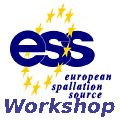Scope

ESS-I workshop on instruments for ESS
Scope
|
 |
|
ESS-I workshop on instruments for ESS |
|
| E.
Farhi |
Rencurel, Vercors, France - Sept. 11-15, 2006 | Modified: June 15th, 2006 |